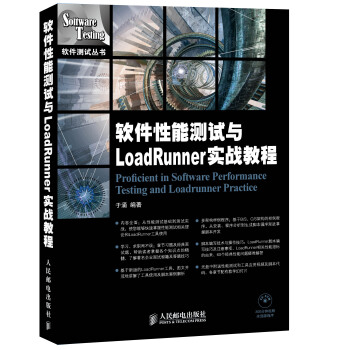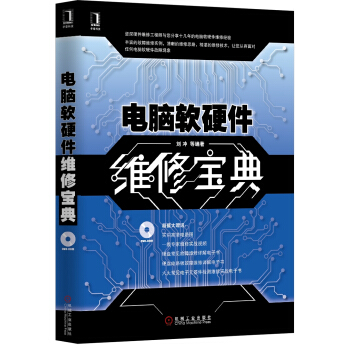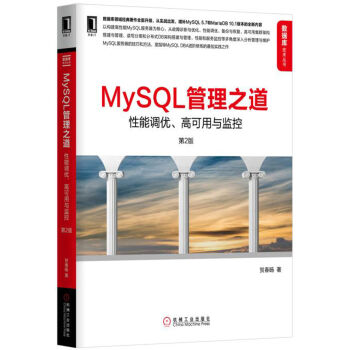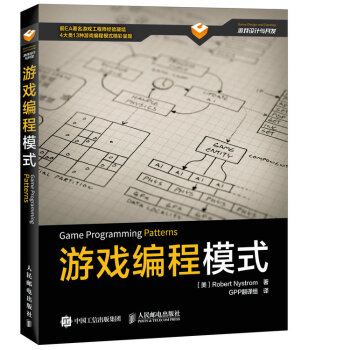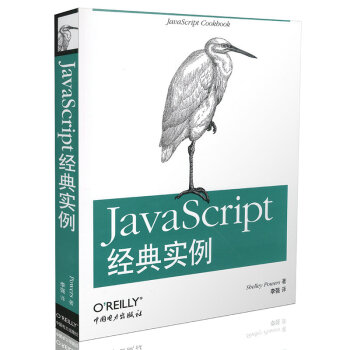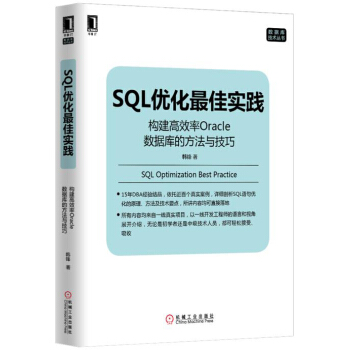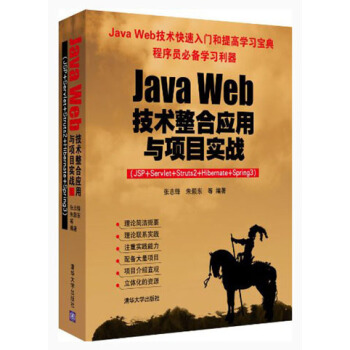![人工智能:一种现代的方法(第3版 影印版) [Artificial Intelligence:A Modern Approach (3rd Edition)]](https://pic.windowsfront.com/10779582/593a30d1N778825b3.jpg)

具体描述
产品特色
编辑推荐
美国伯克利大学与Google人工智能科学家合作编写,全世界100多个国家1200多所大学使用Best computer science textbook ever。
A Must Read for AI
本书为英文影印版,对应翻译版:人工智能:一种现代的方法(第3版)(世界著名计算机教材精选)
其他相关图书:
Unity3D人工智能编程精粹
人工智能(第2版)(十二五”普通高等教育本科国家级规划教材)
内容简介
《大学计算机教育国外著名教材系列·人工智能:一种现代的方法(第3版)(影印版)》专业、经典的人工智能教材,已被全世界100多个国家的1200多所大学用作教材。《大学计算机教育国外著名教材系列·人工智能:一种现代的方法(第3版)(影印版)》的全新版全面而系统地介绍了人工智能的理论和实践,阐述了人工智能领域的核心内容,并深入介绍了各个主要的研究方向。全书仍分为八大部分:一部分“人工智能”,第二部分“问题求解”,第三部分“知识与推理”,第四部分“规划”,第五部分“不确定知识与推理”,第六部分“学习”,第七部分“通信、感知与行动”,第八部分“结论”。《大学计算机教育国外著名教材系列·人工智能:一种现代的方法(第3版)(影印版)》既详细介绍了人工智能的基本概念、思想和算法,还描述了其各个研究方向前沿的进展,同时收集整理了详实的历史文献与事件。另外,《大学计算机教育国外著名教材系列·人工智能:一种现代的方法(第3版)(影印版)》的配套网址为教师和学生提供了大量教学和学习资料。《大学计算机教育国外著名教材系列·人工智能:一种现代的方法(第3版)(影印版)》适合于不同层次和领域的研究人员及学生,是高等院校本科生和研究生人工智能课的优选教材,也是相关领域的科研与工程技术人员的重要参考书。
作者简介
Stuart Russell,1962年生于英格兰的Portsmouth。他于1982年以一等成绩在牛津大学获得物理学学士学位,并于1986年在斯坦福大学获得计算机科学的博士学位。之后他进入加州大学伯克利分校,任计算机科学教授,智能系统中心主任,拥有Smith-Zadeh工程学讲座教授头衔。1990年他获得国家科学基金的“总统青年研究者奖”(Presidential Young Investigator Award),1995年他是“计算机与思维奖”(Computer and Thought Award)的获得者之一。1996年他是加州大学的Miller教授(Miller Professor),并于2000年被任命为首席讲座教授(Chancellor's Professorship)。1998年他在斯坦福大学做过Forsythe纪念演讲(Forsythe Memorial Lecture)。他是美国人工智能学会的会士和前执行委员会委员。他已经发表100多篇论文,主题广泛涉及人工智能领域。他的其他著作包括《在类比与归纳中使用知识》(The Use of Knowledge in Analogy abd Induction).以及(与Eric Wefald合著的)《做正确的事情:有限理性的研究》(Do the Right Thing: Studies in Limited Rationality)。Peter Norvig,现为Google研究院主管(Director of Research),2002-2005年为负责核心Web搜索算法的主管。他是美国人工智能学会的会士和ACM的会士。他曾经是NASAAmes研究中心计算科学部的主任,负责NASA在人工智能和机器人学领域的研究与开发,他作为Junglee的首席科学家帮助开发了一种zui早的互联网信息抽取服务。他在布朗( Brown)大学得应用数学学士学位,在加州大学伯克利分校获得计算机科学的博士学位。他获得了伯克利“卓越校友和工程创新奖”,从NASA获得了“非凡成就勋章”。他曾任南加州大学的教授,并是伯克利的研究员。他的其他著作包括《人工智能程序设计范型:通用Lisp语言的案例研究》(Paradigms of AI Programming: Case Studies in Common Lisp)和《Verbmobil:一个面对面对话的翻译系统》(Verbmobil:A Translation System for Face-to-FaceDialog),以及《UNIX的智能帮助系统》(lntelligent Help Systemsfor UNIX)。
目录
Ⅰ artificial intelligence
1 introduction
1.1what is al?
1.2the foundations of artificial intelligence
1.3the history of artificial intelligence
1.4the state of the art
1.5summary, bibliographical and historical notes, exercises
2 intelligent agents
2.1agents and environments
2.2good behavior: the concept of rationality
2.3the nature of environments
2.4the structure of agents
2.5summary, bibliographical and historical notes, exercises
Ⅱ problem-solving
3 solving problems by searching
3.1problem-solving agents
3.2example problems
3.3searching for solutions
3.4uninformed search strategies
3.5informed (heuristic) search strategies
3.6heuristic functions
3.7summary, bibliographical and historical notes, exercises
4 beyond classical search
4.1local search algorithms and optimization problems
4.2local search in continuous spaces
4.3searching with nondeterministic actions
4.4searching with partial observations
4.5online search agents and unknown environments
4.6summary, bibliographical and historical notes, exercises
5 adversarial search
5.1games
5.2optimal decisions in games
5.3alpha-beta pruning
5.4imperfect real-time decisions
5.5stochastic games
5.6partially observable games
5.7state-of-the-art game programs
5.8alternative approaches
5.9summary, bibliographical and historical notes, exercises
6 constraint satisfaction problems
6.1defining constraint satisfaction problems
6.2constraint propagation: inference in csps
6.3backtracking search for csps
6.4local search for csps
6.5the structure of problems
6.6summary, bibliographical and historical notes, exercises
Ⅲ knowledge, reasoning, and planning
7 logical agents
7.1knowledge-based agents
7.2the wumpus world
7.3logic
7.4propositional logic: a very simple logic
7.5propositional theorem proving
7.6effective propositional model checking
7.7agents based on propositional logic
7.8summary, bibliographical and historical notes, exercises
8 first-order logic
8.1representation revisited
8.2syntax and semantics of first-order logic
8.3using first-order logic
8.4knowledge engineering in first-order logic
8.5summary, bibliographical and historical notes, exercises
9 inference in first-order logic
9.1propositional vs. first-order inference
9.2unification and lifting
9.3forward chaining
9.4backward chaining
9.5resolution
9.6summary, bibliographical and historical notes, exercises
10 classical planning
10.1 definition of classical planning
10.2 algorithms for planning as state-space search
10.3 planning graphs
10.4 other classical planning approaches
10.5 analysis of planning approaches
10.6 summary, bibliographical and historical notes, exercises
11 planning and acting in the real world
11.1 time, schedules, and resources
11.2 hierarchical planning
11.3 planning and acting in nondeterministic domains
11.4 multiagent planning
11.5 summary, bibliographical and historical notes, exercises
12 knowledge representation
12.1 ontological engineering
12.2 categories and objects
12.3 events
12.4 mental events and mental objects
12.5 reasoning systems for categories
12.6 reasoning with default information
12.7 the intemet shopping world
12.8 summary, bibliographical and historical notes, exercises
Ⅳ uncertain knowledge and reasoning
13 quantifying uncertainty
13.1 acting under uncertainty
13.2 basic probability notation
13.3 inference using full joint distributions
13.4 independence
13.5 bayes' rule and its use
13.6 the wumpus world revisited
13.7 summary, bibliographical and historical notes, exercises
14 probabilistic reasoning
14.1 representing knowledge in an uncertain domain
14.2 the semantics of bayesian networks
14.3 efficient representation of conditional distributions
14.4 exact inference in bayesian networks
14.5 approximate inference in bayesian networks
14.6 relational and first-order probability models
14.7 other approaches to uncertain reasoning
14.8 summary, bibliographical and historical notes, exercises
15 probabilistic reasoning over time
15.1 time and uncertainty
15.2 inference in temporal models
15.3 hidden markov models
15.4 kalman filters
15.5 dynamic bayesian networks
15.6 keeping track of many objects
15.7 summary, bibliographical and historical notes, exercises
16 making simple decisions
16.1 combining beliefs and desires under uncertainty
16.2 the basis of utility theory
16.3 utility functions
16.4 multiattribute utility functions
16.5 decision networks
16.6 the value of information
16.7 decision-theoretic expert systems
16.8 summary, bibliographical and historical notes, exercises
17 making complex decisions
17.1 sequential decision problems
17.2 value iteration
17.3 policy iteration
17.4 partially observable mdps
17.5 decisions with multiple agents: game theory
17.6 mechanism design
17.7 summary, bibliographical and historical notes, exercises
V learning
18 learning from examples
18.1 forms of learning
18.2 supervised learning
18.3 leaming decision trees
18.4 evaluating and choosing the best hypothesis
18.5 the theory of learning
18.6 regression and classification with linear models
18.7 artificial neural networks
18.8 nonparametric models
18.9 support vector machines
18.10 ensemble learning
18.11 practical machine learning
18.12 summary, bibliographical and historical notes, exercises
19 knowledge in learning
19.1 a logical formulation of learning
19.2 knowledge in learning
19.3 explanation-based learning
19.4 learning using relevance information
19.5 inductive logic programming
19.6 summary, bibliographical and historical notes, exercis
20 learning probabilistic models
20.1 statistical learning
20.2 learning with complete data
20.3 learning with hidden variables: the em algorithm.
20.4 summary, bibliographical and historical notes, exercis
21 reinforcement learning
21. l introduction
21.2 passive reinforcement learning
21.3 active reinforcement learning
21.4 generalization in reinforcement learning
21.5 policy search
21.6 applications of reinforcement learning
21.7 summary, bibliographical and historical notes, exercis
VI communicating, perceiving, and acting
22 natural language processing
22.1 language models
22.2 text classification
22.3 information retrieval
22.4 information extraction
22.5 summary, bibliographical and historical notes, exercis
23 natural language for communication
23.1 phrase structure grammars
23.2 syntactic analysis (parsing)
23.3 augmented grammars and semantic interpretation
23.4 machine translation
23.5 speech recognition
23.6 summary, bibliographical and historical notes, exercis
24 perception
24.1 image formation
24.2 early image-processing operations
24.3 object recognition by appearance
24.4 reconstructing the 3d world
24.5 object recognition from structural information
24.6 using vision
24.7 summary, bibliographical and historical notes, exercises
25 robotics
25.1 introduction
25.2 robot hardware
25.3 robotic perception
25.4 planning to move
25.5 planning uncertain movements
25.6 moving
25.7 robotic software architectures
25.8 application domains
25.9 summary, bibliographical and historical notes, exercises
VII conclusions
26 philosophical foundations
26.1 weak ai: can machines act intelligently?
26.2 strong ai: can machines really think?
26.3 the ethics and risks of developing artificial intelligence
26.4 summary, bibliographical and historical notes, exercises
27 al: the present and future
27.1 agent components
27.2 agent architectures
27.3 are we going in the right direction?
27.4 what if ai does succeed?
a mathematical background
a. 1complexity analysis and o0 notation
a.2 vectors, matrices, and linear algebra
a.3 probability distributions
b notes on languages and algorithms
b.1defining languages with backus-naur form (bnf)
b.2describing algorithms with pseudocode
b.3online help
bibliography
index
前言/序言
用户评价
这本书的厚度让我一开始有些畏惧,但当我真正沉浸其中时,才发现它所包含的内容是如此的精彩和有价值。不同于一些只注重技术细节的书籍,这本书更注重人工智能的整体框架和发展脉络。作者巧妙地将人工智能的各个分支,如搜索、规划、知识表示、推理、机器学习、自然语言处理、计算机视觉等,有机地串联起来,让我能够清晰地看到它们之间的内在联系和相互影响。我尤其喜欢书中关于“智能体”的概念,它提供了一个统一的视角来理解和设计人工智能系统,让我能够从一个更宏观的角度去审视不同的人工智能应用。此外,书中对于人工智能的伦理和社会影响的讨论,也让我受益匪浅。在快速发展的人工智能时代,深刻理解其潜在的风险和挑战,对于负责任地发展和应用这项技术至关重要。这本书不仅传授知识,更引导我进行批判性思考,让我对人工智能的未来有了更全面和深入的认识。
评分这本书的内容实在太丰富了,每次阅读都能有新的发现和领悟。我尤其喜欢书中对于“学习”的深入剖析,不仅仅是简单的模式识别,而是从数据中提取规律、建立模型、并不断优化的过程。书中对各种机器学习算法的介绍,从最基础的监督学习到更高级的强化学习,都用清晰的逻辑和丰富的例子来阐述,让我能够理解它们的工作原理和适用场景。我甚至开始尝试着将书中的一些概念应用到我自己的学习和工作中,效果出乎意料地好。而且,书中对人工智能在各个领域的应用也进行了广泛的介绍,比如在医疗、金融、交通等方面的案例,让我看到了人工智能的巨大潜力。这本书不仅仅是一本技术教材,更像是一本关于未来科技的启蒙读物,它让我对人工智能有了更全面、更深入的理解,也为我未来的学习和职业发展提供了重要的方向。
评分这本书简直是打开了我的新世界大门!我一直对人工智能这个概念充满好奇,但总觉得它高不可攀,离我的日常生活很遥远。直到我偶然翻开这本《人工智能:一种现代的方法(第3版 影印版)》,我才发现,原来人工智能并不是那么神秘莫测,它的原理和应用就蕴藏在我们身边。书中的语言虽然是影印版,但翻译过来读起来依然很顺畅,很多概念的解释都非常直观,甚至还穿插了一些生动形象的比喻,让我这个非科班出身的读者也能很快理解。我尤其喜欢作者在讲解某些算法的时候,会从最基础的逻辑推理开始,一步步剥茧抽丝,直到最终形成复杂的模型。这种由浅入深的讲解方式,让我感觉自己是真的在学习,而不是被动地接收信息。而且,书中的案例也十分丰富,涵盖了从早期的逻辑推理到现代的机器学习、深度学习,让我对人工智能的发展历程有了更清晰的认识。读这本书,我感觉自己不再是被动的技术消费者,而是能够开始理解和欣赏这些智能技术背后的智慧,甚至萌生了自己动手尝试一些小项目的好奇心。
评分这本书就像一位经验丰富的向导,带领我穿梭于人工智能的浩瀚宇宙。我一直对机器学习背后的数学原理感到困惑,总觉得那些公式和算法离我太远,但在这本书里,作者用一种非常优雅的方式将这些复杂的概念呈现出来。他并没有直接抛出晦涩难懂的公式,而是先从问题的本质出发,然后逐步引入数学工具来解决问题,仿佛是为我量身定制了一堂数学课,只不过这次的学习目的更加明确,应用场景更加丰富。我特别欣赏书中关于“学习”本身的探讨,不仅仅是数据驱动的模式识别,更包含了从经验中提取知识、进行推理和决策的过程。这种对“智能”的哲学思考,让我对人工智能的理解不再局限于技术层面,而是上升到了更深层次的认知。阅读过程中,我时常会停下来,思考作者提出的问题,并尝试将书中的理论与我所接触到的现实世界的应用联系起来。这种互动式的阅读体验,极大地增强了我的学习动力和对人工智能的探索热情。
评分我一直以为人工智能就是那些科幻电影里的机器人,但这本书彻底颠覆了我的认知。作者以一种非常通俗易懂的方式,将人工智能的核心思想和关键技术娓娓道来。我印象最深刻的是书中对于“搜索”算法的讲解,它不仅是解决问题的通用框架,更是理解很多复杂人工智能任务的基础。从简单的迷宫寻路到复杂的国际象棋对弈,都可以用搜索的思路来解决,这让我惊叹于算法的强大和通用性。而且,书中对于“表示”的探讨也非常深入,不同的知识表示方法对于问题的解决效率有着至关重要的影响。我开始意识到,人工智能并非是一个单一的技术,而是由多种技术和思想融合而成的复杂体系。这本书就像一扇窗,让我窥见了人工智能这个宏大世界的冰山一角,但却足以激发我继续探索的欲望。读完之后,我不再害怕人工智能,而是对它充满了好奇和期待。
评分送货快购买方便,先囤货。
评分很好,最近学习Mathematica 11,这本书讲的是10,不过基本的操作差不多啦,很好帮助快速上手。
评分感觉是二手的 书脏脏的 还有折角
评分价格比书店便宜,包装简陋
评分跟风买了本人工智能的书,这么厚,感觉应该很全面和详细
评分据说翻译的错误比较多,买个英文的瞅瞅
评分关于mathematica的书实在太少,买一本参考一下,还没看,不知内容如何
评分书的质量很好,印刷清晰,很实用的书,好评!
评分书的质量很好,非常不错哦!
相关图书
本站所有内容均为互联网搜索引擎提供的公开搜索信息,本站不存储任何数据与内容,任何内容与数据均与本站无关,如有需要请联系相关搜索引擎包括但不限于百度,google,bing,sogou 等
© 2025 book.coffeedeals.club All Rights Reserved. 静流书站 版权所有


